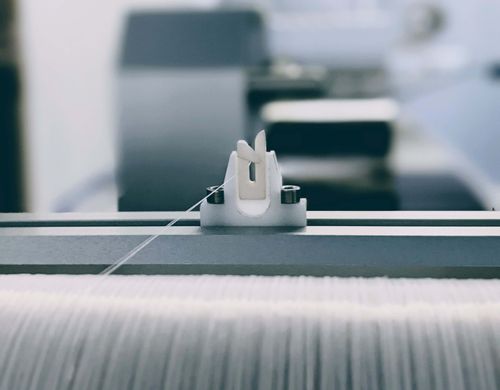Sustainability was just the beginning—Kintra delivers the competitive edge modern brands are chasing

Kintra takes advantage of commercially scaled fermentation technologies to source the raw materials needed to manufacture our yarn. These materials are available in large quantities, maintain a consistently high quality, and can be easily traced back to agricultural inputs. While these factors are existential to low cost production within the price sensitive textile supply chain, it also allows brands and consumers to link their purchasing choices with measurable environmental improvements.
Kintra’s resin and yarn can be produced at lower temperatures without sacrificing production speed—delivering a 30% reduction in energy consumption compared to conventional polyester processes. Manufacturers gain measurable efficiency while the industry reduces its environmental footprint.


Kintra’s fibers accept color through low-temperature dyeing processes, eliminating the need for toxic carriers and other chemistries required to dye PET. The result: vibrant, lasting color with less energy, less water, and no hazardous waste.
Kintra fabrics score top marks in abrasion and pilling resistance, meaning garments maintain their appearance and performance longer. By extending garment life, we help reduce the volume of textiles sent to landfill and the resources required for replacement.


Our yarns pass the ASTM D6400 / ISO 14855-1 tests for aerobic biodegradation in controlled compost conditions. We intentionally designed Kintra to biodegrade in aerobic environments as this has strong potential to address microfiber pollution within wastewater treatment facilities, similar to how natural fibers biodegrade. Kintra is also compatible with chemical recycling processes, enabling circular pathways for fabrics at the end of their life
